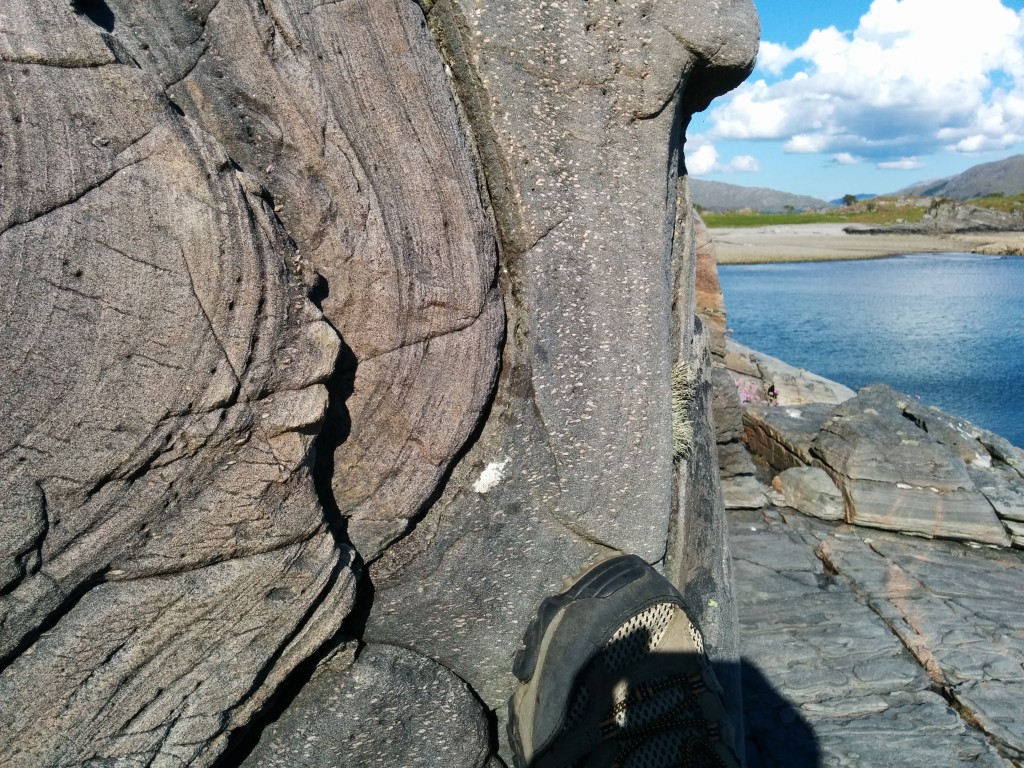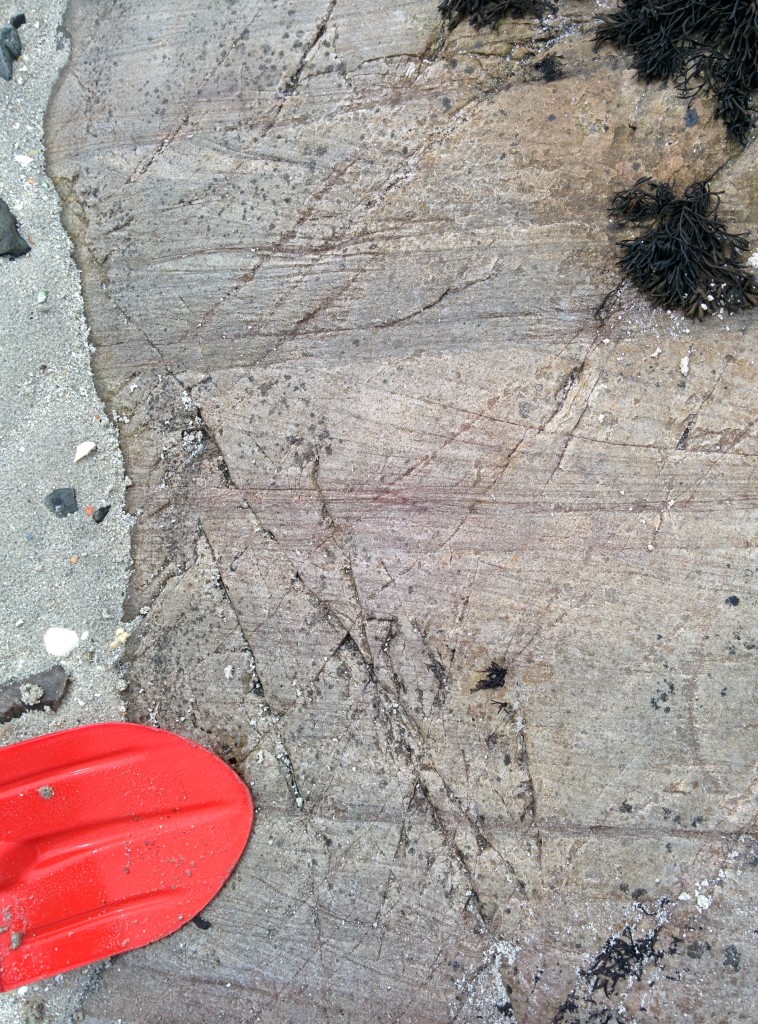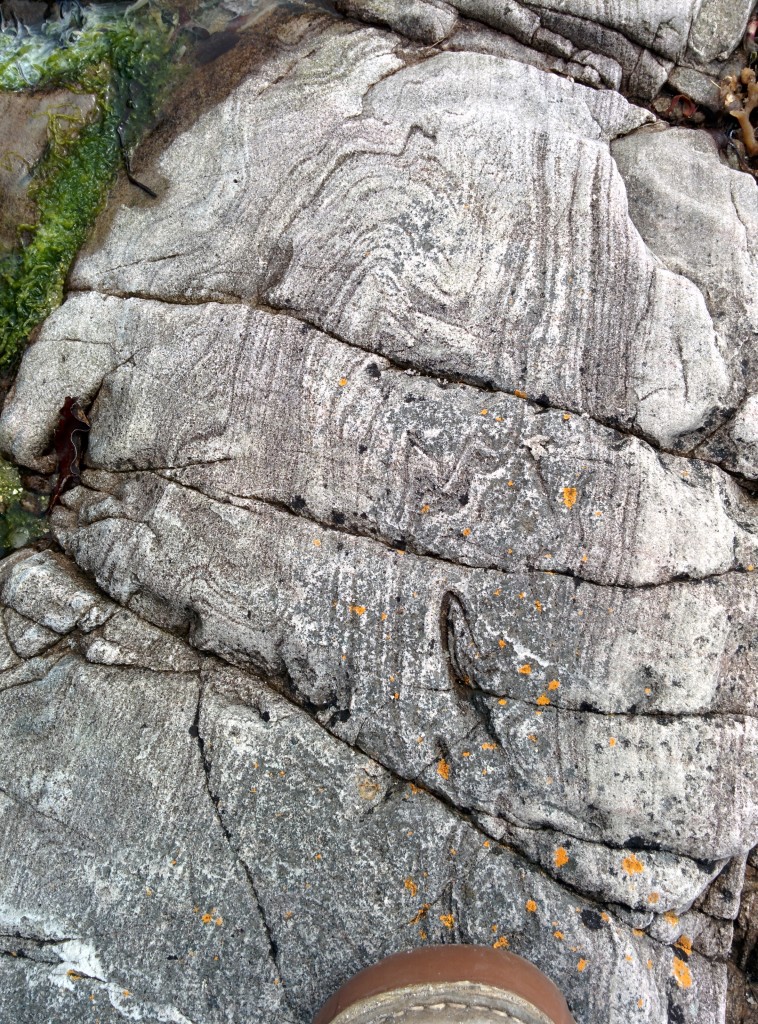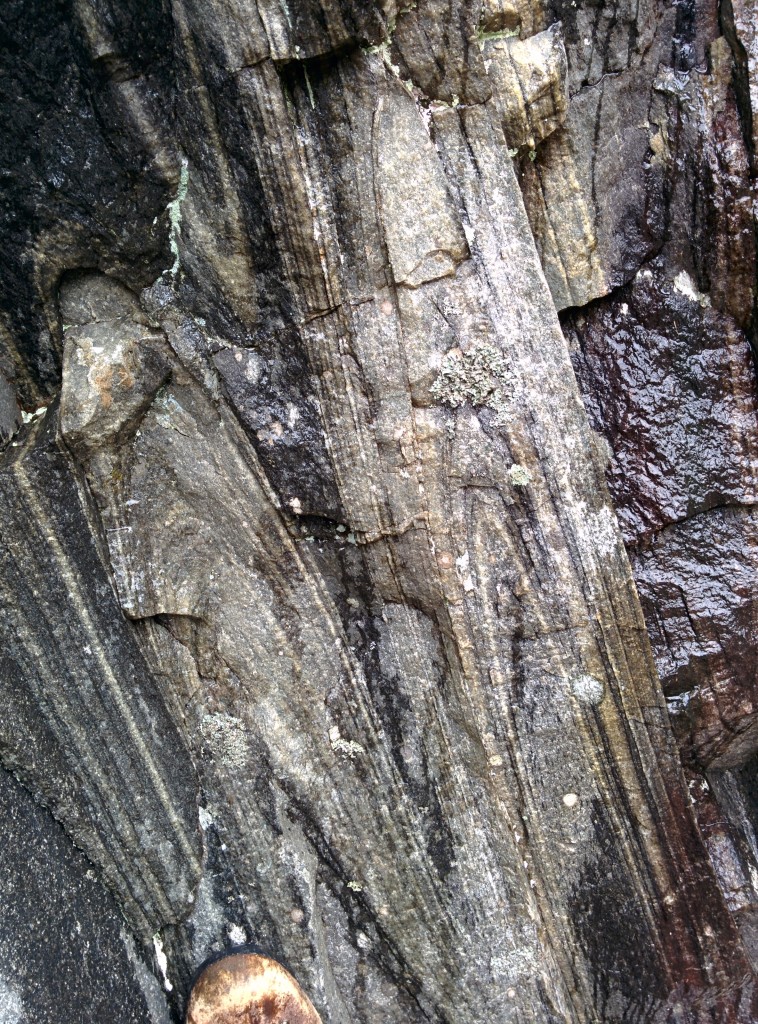I’d like to introduce you to a rock.
Pretty isn’t it? The white crystals caught my eye, as they did that of three different geologists of the British Geological Survey, who between them collected 5 different samples from the same small area of Scotland.
When did these crystals grow? How old are they? These rocks here are part of the Moine supergroup which started as a pile of sediments a billion years ago and the last geological event in this part of Scotland was a mere 60 million years ago, so there’s a wide possible range.
The first and easiest tool available to a geologist is to establish the age of something relative to other events. The white spots are potassium feldspar that grew when the rock was metamorphosed – changed from a muddy sand into something (even) more interesting. Metamorphosis is most often associated with geological structures. Minerals most often form because rocks are buried deep and heated and this squashes them, flattening or folding the sedimentary layers and metamorphic minerals alike.
In this picture we see a set of lines folded round which are original sedimentary layers. Our rock comes from the darker layer to the right. The white spots within it are roughly flattened along a plane that passes through the middle of the fold. This suggests they formed at the same time as the rocks were folded.
There is a little more detail to be seen in thin sections made by the state-funded geologists who have passed here before me1.

Image taken from BGS thin section image archive
Here we are looking down a microscope at the light that has passed through a thin slice of the rock – we are peering into its soul. The plain white areas are the feldspar crystals which we can call porphyroblasts if we are feeling fancy (meaning they grew as big crystals during metamorphism). Notice also the patterns made by the long and thin red-brown and grey mica crystals. There are little folds.
With more magnification (and in cross polarised light, so the minerals look different) you can see that the feldspars contain grains of other minerals that a strung out in lines. These are minerals that were swallowed by the growing feldspar and give a glimpse of earlier structures.
Here’s one interpretation of what is going on. An early alignment of the minerals was parallel to the sedimentary bedding. This was horizontal in our field of view. The feldspar grains grew over this fabric. Later the rock was squashed in a different direction, causing the folding we see in the outcrop and in the thin section. The mica grains are now mostly vertical with only a few areas staying flat. Some feldspar grains stayed put, but most have been rotated so that their long axes are vertical.
I’ve deliberately gone for the most simple explanation, but it’s a plausible one based on what we see in the outcrop. Two sets of squashing and one phase of mineral growth. Nevertheless its likely that we are not seeing the full picture here. The same package of rocks looks very different depending on where you are. About five kilometres west of where my rock came from, similar Moine sediments have vertical layers, but so little deformed that sedimentary cross bedding is visible.
Nearby there are folds, but these were formed when it was still sediment, the layers folding due to slipping of sand. You can tell this because the layers either side of the folds are flat.
Go ten kilometres east and the you are still in Moine sediments, but they are rather more intensely deformed and metamorphosed. Here the original sedimentary layers are stretched out into layers as thin as centimetre.
Clearly, it’s important not just to look at a single outcrop – which is where geological mapping comes in. This shows that these metamorphic rocks are part of a wide area over northern Scotland. This is unconformably overlain by undeformed sediments of Devonian age. So sometime between 1000 and 416 million years ago these sediments were heated and folded – that’s when the white crystals grew.
These are old techniques and technology marches on. Modern earth scientists, armed with sophisticated machines, scary acid and an understanding of radioactive decay are able to date the age of metamorphic events and even directly date the age of individual metamorphic minerals.
The Moine rocks of Scotland are well studied. Bring together hundreds of radiometric dates, highly detailed mapping and the study of thousands of outcrops and thin sections and you get a picture of almost terrifying complexity.
It turns out that the white grains in my rock sample with its apparently simple history could have formed in any one of at least five different occasions when metamorphic minerals formed in the area. Each one of these represents a significant event – an ocean closing, an arc smashing itself into oblivion against an unyielding continent – yet somehow a single rock shows only a single part of this saga.
I’ll tell this complicated geological history, and why it’s not visible in a single outcrop in another post.







This was nice to read. As an amateur I’ve read several geology textbooks but in the field I’m totally hopeless. This tells me what I might see if I had sufficient understanding of the context. At first sight I would say: “That’s a granite.” and then with further thought: “No it does not look granite-like, too dark, wrong texture, it must be one of those undeterminable other rocks.” And there it would stop for me … 🙂
Pingback: The many metamorphoses of the Moine | Metageologist